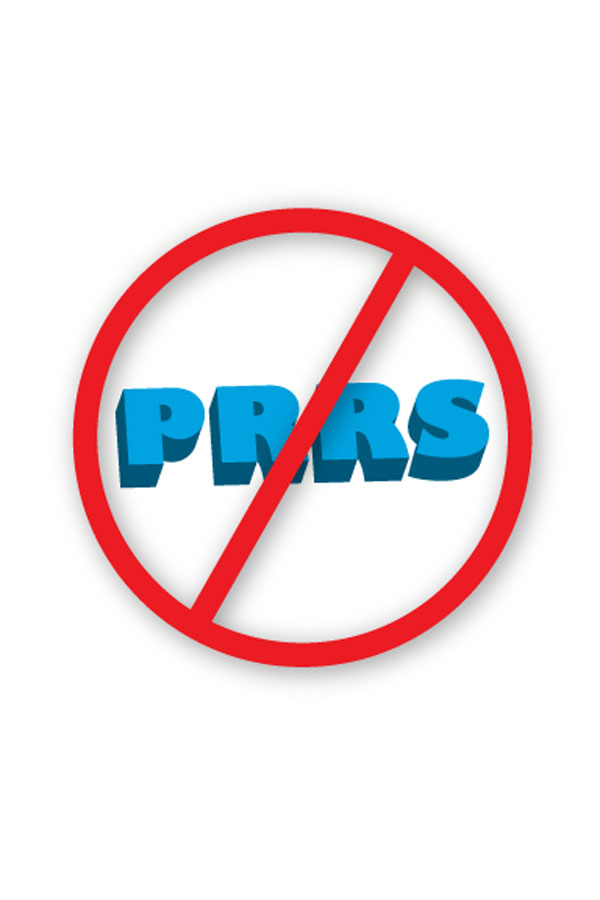The latest combined incidence data from USDA's PRRS project and the American Association of Swine Veterinarians (AASV) confirms that sow farms are breaking with PRRS at a rate of about 3% per week, peaking in the fall.

Repeated porcine reproductive and respiratory syndrome (PRRS) breaks have dealt pork producers a dose of defeatism.
Illinois veterinarian Jim Lowe of Albers shares their frustration in his work in breed-to-wean and multi-site production systems.
The latest combined incidence data from USDA’s PRRS project and the American Association of Swine Veterinarians (AASV) confirms that sow farms are breaking with PRRS at a rate of about 3% per week, peaking in the fall.
Five Facts about PRRS
Lowe, who is leading a new group focused on strategic consulting, lists five PRRS facts:
1. There are only two types of sow farms — truly naïve and positive. To say that a herd is positive-stable means there is reproductive stability, but it doesn’t say much about the pigs. “These stable farms have positive pigs on a regular basis, and we don’t test enough to figure that out,” he declares.
2. If PRRS-positive sow farms are tested, it is found that, on average, they spit out virus for 3-6 weeks, they do it every 6-18 months, and they infect 1-2% of pigs at weaning.
3. PRRS spread is repeatable and doesn’t fluctuate in most sow herds.
4. Data from the PRRS economic study authored by Derald Holtkamp, DVM, at Iowa State University (http://nationalhogfarmer.com/health-diseases/new-prrs-study-impact-0920) found that pigs coming out of positive sow farms take a $6 hit. “They look good, but feed conversion is not good, there is an incremental increase in mortality and their negative penmates are worth about $6 a head more.”
5. To be competitive on a worldwide basis, U.S. pork producers need to have negative sow farms.
Defining Negative Status
It’s obvious that producers can’t test every pig to determine the number of infected pigs in a group, Lowe admits.
Normal procedure is to test 30 weaned pigs once a month. In Lowe’s mind, that raises two questions: What does that tell us about true prevalence rate? If they all test negative, does that mean the farm is always negative?
Lowe says in any given month, assuming that the test finds all of the positive pigs, the true infection rate in a finisher from a PRRS-stable sow farm is 0-1.7% for the one week of sampling. “That doesn’t say anything about the other weeks in the month. While that low percentage rate of infection doesn’t sound like very much, it’s enough to make that group of pigs go PRRS-positive in finishing.”
Lowe says it’s possible that testing 30 pigs a month can determine if the sow herd has gone negative. But there’s also the chance that during the other three weeks of the month, pigs could still be PRRS-positive, and without more testing, that infection could be missed.
The cost of the disease to a PRRS-positive sow farm can become an unrecognized financial drain to the operation, he says. Lowe’s dataset shows the sow farm may experience a drag of two pigs/sow/year (P/S/Y) in production. If a weaned pig is worth $35, that’s $70 lost/sow/year. Coupled with a loss of about $12/sow (50¢/pig born with PRRS, averaging 24 P/S/Y), the average cost of PRRS to a stable sow farm is $82/sow/year. That’s $205,000/year on a 2,500-sow farm.
“Although PRRS-positive sow farms look okay, there are real dollars left on the table. In the example above, over a 10-year period, the loss is $2 million,” Lowe emphasizes.
Despite those staggering economic losses, producers still resist cleanup because of a fear of repeated breaks.
“Producers need to remember that there is no economic data to support that prior infection in a sow herd reduces the economic impact of a new infection. The money is in the pigs and the pigs are still a challenge with the new infection,” he reminds.
Steps to PRRS-Naïve Status
Lowe offers three key steps to move your sow herd to PRRS-naïve status:
1. Understand the status of your sow herd today. Your veterinarian can help you determine the current PRRS stage as designated by the AASV.
2. Use standardized testing procedures to define herd status.
3. Use standardized management processes to eliminate the virus.
Using standardized practices encourages repeatability, letting the science drive the decisions; transparency (everybody knows what’s going on); and accountability (production team knows they must be accountable and leadership knows it has to make the cleanup happen), Lowe says.
Lowe spoke at the Iowa Pork Congress in late January in Des Moines, IA. He can be contacted at: [email protected].
About the Author(s)
You May Also Like





